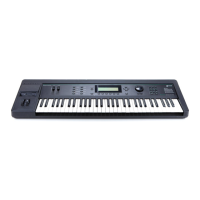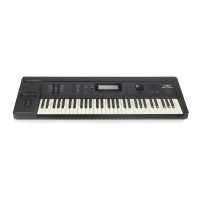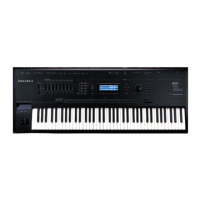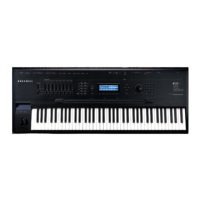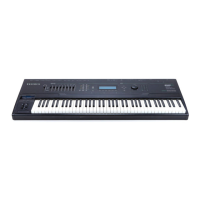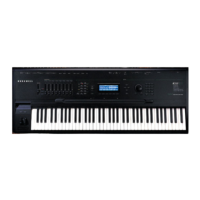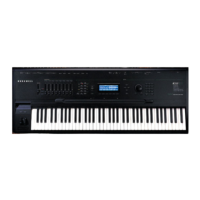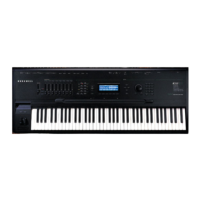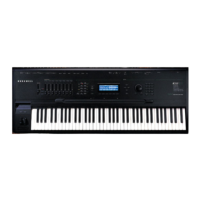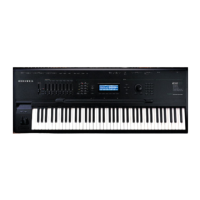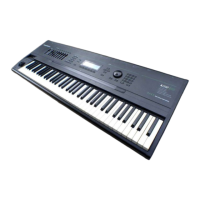2-4
Sampling with the K2000
Setting Up For Sampling
Threshold (Thresh)
The Thresh parameter controls when the K2000 actually begins sampling incoming signals. If
you set it to a value of Off, sampling begins immediately when you press the Record soft button.
Otherwise the K2000 waits for the incoming signal to exceed a specified threshold before
beginning to record. You can set the threshold from -90 to 0 dB, in 6 dB increments.
The K2000 has a pre-trigger feature—that is, the K2000 records the 3,000 samples immediately
before the point at which the threshold is exceeded. This prevents early transients from being
missed. This feature is automatic whenever the Thresh parameter is set to a non-zero value.
You’ll want to adjust this parameter if your samples are missing these transients; the lower the
threshold, the more certain you’ll be of capturing every element of the signal. In some cases, you
may get better results if you set the Thresh parameter to a value of Off, then press the Record
soft button and wait briefly before beginning the sound to be sampled. This will guarantee that
every element of the sample is captured. After you’ve recorded the sample, you can always
adjust the starting point on the TRIM page, to remove any silence before the start of the actual
sample.
Version 3 only
You can trigger and map samples from the keyboard, as follows:
1. On the Sample page, set the Thresh parameter to Key
2. Press Auto.
3. Strike a key. This triggers the sampler, places the root of the resulting at the key you
struck, and tunes all the other notes that use that root. This is an extremely convenient
way to record samples and build them into a program.
Time
The Time parameter lets you determine how long the sample will be. The available sample time
is a function of the sample rate and the amount of available sample memory. The K2000
calculates this automatically, and limits the maximum value of the Time parameter accordingly.
At a value of 0 for this parameter, the K2000 will not record.
Sample
The Sample parameter lets you select any sample in memory for auditioning. This is a
convenient way to listen to the samples you’ve made without having to manually create
keymaps and programs for them. With a value of None for this parameter, the K2000 plays the
last program or setup you selected before entering Sample mode. The list of values includes all
ROM and RAM samples.
When you select a sample for auditioning, the K2000 automatically creates a temporary keymap
and program, based on the settings for Default Program 199—which is a simple single-keymap
program with few controller assignments, and the effects set to 0% wet (100% dry). Any edits
you’ve made to Program 199 are reflected in the sample you audition. When you exit the Sample
mode page, the temporary keymap and program disappear until the next time you audition a
sample. You can create regular RAM keymaps and programs using the Preview soft button; see
The Preview Soft Button on page 2-6.
If you don’t have enough free program RAM, you may be unable to audition samples, since the
K2000 won’t have enough RAM to create the temporary keymap and program. In this case,
deleting a few objects from RAM will restore the audition feature.
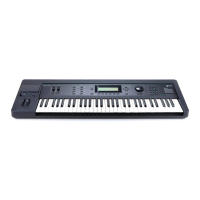
